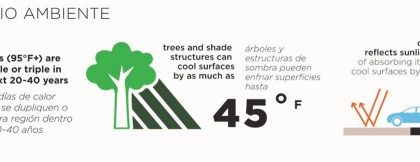#WalkBikeForward: Join us on our journey honoring key moments and people that have shaped our field as we celebrate 20 years of creating active, healthy communities.

Mia Birk is the former President and CEO of Alta Planning + Design, and former Bicycle Program Coordinator for the City of Portland. She is author of “Joyride: Pedaling Toward a Healthier Planet”. Birk also helped create the Initiative for Bicycle and Pedestrian Innovation at Portland State University.
Active Transportation Goes Mainstream
The biggest advance of the past 20 years is that active transportation is now mainstream. People working on it are not considered crazy, not even particularly progressive. There are now conferences, consulting firms, technical manuals. The business community talks seriously about its potential for jobs, tourism, talent attraction.
At the 1994 Pro Walk Pro Bike conference, there were six or seven of us who were city bike/ped coordinators and we were so happy to meet each other because we felt lonely in our jobs. Two years later, Earl Blumenauer was elected to Congress [from Portland]. Before that he’d been on the Portland City Council, and taught a class for activists on how to influence local officials, not just yell at them.
At that time a few cities were showing leadership, like Portland, Eugene, Corvallis, Boulder, Cambridge, Davis and Palo Alto. Seattle and Minneapolis were doing good things with trails. Vancouver, BC was doing bike boulevards. Montreal had separated bikeways. Vancouver and Chicago started bike ambassador programs.
Why Portland got so much attention is not that we were the best at everything, but that we did things comprehensively and focused on developing the infrastructure, as well as integration with transit, safe routes to schools, paying attention to maintenance of the bike lanes, encouragement activities, and much more — a very detailed, nuanced and comprehensive approach.
One of the things leading to the formation of Alta Planning + Design by Michael Jones in 1996 was that California passed rules (the Bicycle Transportation Account — BTA) to put state money into local communities for bicycle transportation, but they had to have a proper bike plan to get the money. That created an opening. I joined Alta in 1999. After leaving the City of Portland as Bicycle Program Coordinator, Michael Jones asked me if I wanted to join Alta because I had experience in doing a bike plan. Active transportation was still a pretty small pond at that time.
What Attracted Me to Biking
I grew up in a place where everybody drove for every single trip, to every place. When I started to ride a bike to get around Washington DC, as well as travel to cities around the world researching energy efficient transportation, I found a completely different perspective on cities.
What to Expect in 2036
By 2036, cities will have much bigger bikeway networks than today, with a lot more separated bike lanes. Bike signals will be found at most major intersections. Every kid is going to think it’s absolutely normal to bike and walk to school. People will think it’s absolutely normal to get around by transit, bike share, car share, Uber, walking and to use a car to on the weekend to go to the country.
You’ll see as many women on bikes as men, which is starting to happen already because they feel safe on separated bikeways. And there will be more separation not just between bikes and cars, but between bikes and pedestrians, like you have with the Indianapolis Cultural Trail. And we’ll see more pedestrian plazas like in New York City. I think we will see parts of cities that are car-free, with only delivery vehicles and for-hire vehicles allowed.
We still have a lot of work to do today in terms of equity and inclusion in active transportation. The field is still largely white.
Funding for active transportation continues to be a challenge. For communities to be truly active we need to repurpose space (and funding) that we now set aside for storing and moving cars. That always stirs opposition. But change always creates a reaction — if you’re not getting a reaction, you’re probably not changing much.


